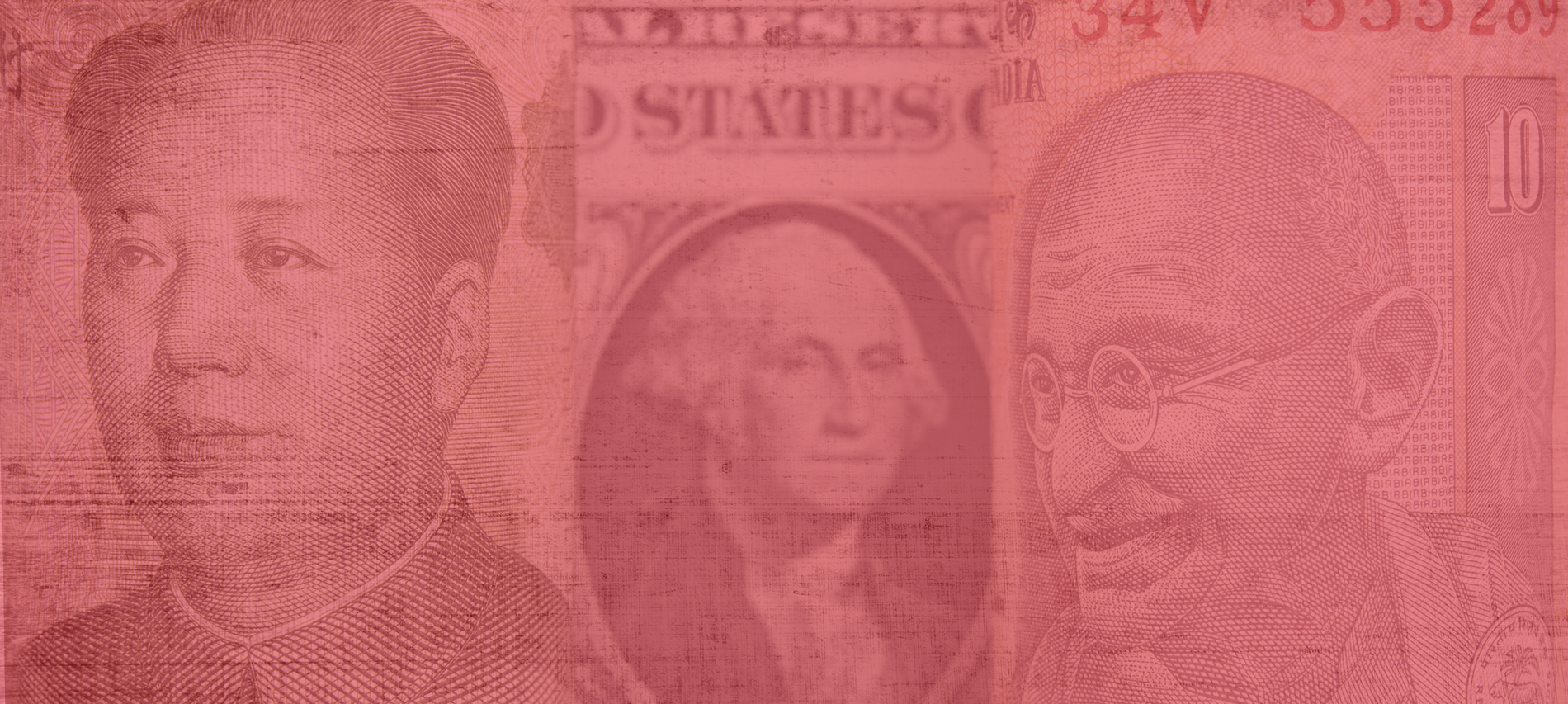Rajat Sethi is an alumnus of IIT Kharagpur and Harvard University. Shubhrastha is an alumnus face of Miranda House, Delhi University. Both of them are actively involved in impacting politics in various North-Eastern states of India.
Their book The Last Battle of Saraighat is the first-ever account of BJP’s landslide victory in the 2016 Assam legislative assembly elections.
Here are five things you should know about the power couple:





Aren’t they fascinating?

Tag: india
How Assam Happened—An Excerpt from ‘The Last Battle of Saraighat’
In ‘The Last Battle of Saraighat’, political campaigners for the BJP in the North-East, Rajat Sethi and Shubhrastha take you behind the scenes of the BJP’s landslide victory in the 2016 Assam legislative assembly elections. In the book, they provide details of the election strategies and explain the rise of the party in the North-East.
Here’s an excerpt chronicling the win of BJP in Assam.
Assam celebrates three different Bihu festivals, each one of which coincides with a distinct phase in the farming calendar. Kati Bihu, the first in the series, is observed in October and is marked by solemn prayers to save the paddy crop from insects and evil sights. Bhogali or Magh Bihu is all about food and is celebrated in January at the end of paddy harvesting period when the granaries are full. The last Bihu in the calendar is called Rongali Bihu or Bohag Bihu, which marks the beginning of the Assamese New Year when the field is prepared for the next season of paddy cultivation. It is the most widely celebrated and colourful festival in Assam.
Every five years, the Assamese farming calendar closely coincides with the campaign calendars of political parties. The body politic of Assam is promised new dreams every time. This interesting tradition was captured in a 1992 song by Bhupen Hazarika on Bihu. Sung to the tune of a lullaby, it makes a plea to Bihu: Please do come once a year and wake up mother Assam, and even in these dangerous times, please O Bihu, come and give the Assamese body and mind its ritual bath.
Bihu is indeed a ‘national birthday—the day of renewal when the Assamese polity takes stock of its past and future’.
In the Bihu of 2016, the electoral curtains were to drop and a new polity was to emerge.
Armouring for the Battle
By the end of December 2015, BJP had almost all the right ingredients in place to project itself as the sole and credible political challenger to the incumbent Congress government in the ensuing assembly elections scheduled for April 2016. Anti-incumbency against the Tarun Gogoi–led Congress government was quickly building up. The BJP now appeared stronger as an Opposition in Assam. It had a face. It had the narrative. The party also had the required momentum to oust the incumbent.
But a deep emotional connect with the people of Assam was amiss. BJP had so far been only a marginal political player in the state and electorate were still finding it hard to relate with the party as its political choice.
On the other hand, the Congress had a well-oiled foundation and a veteran leader in Gogoi, who had led the state peacefully for fifteen long years. Assam has traditionally been a strong Congress bastion. Out of the nearly seven decades of independent India, the Congress was in power in Assam for nearly six decades. Winning Assam would have meant that the Congress was able to hold on to its turfs after its decimation in the 2014 Lok Sabha elections. Losing Assam would have implied a nosedive for the party nationally.
With the political ground that the BJP had covered over the past two years, it could not afford to lose the Assam battle. The next four months of electioneering were critical to tilt the balance in its favour. After the humiliating defeat in Delhi and Bihar, Assam was a test of the BJP’s confidence. It would also signify if there was a sense of trust for the party among the masses and if the Modi wave still reigned high in urban as well as far-flung rural centres of India. For the BJP, it meant finding a foothold in North-east India and marking its presence in a sensitive borderland. For the central government under Modi, Assam, if claimed, would have become a pivot for the Act East Policy. So, for all reasons—political and developmental—Assam was a catch!

5 Things You Should Know About the North-East of India
The Last Battle of Saraighat looks at Assam as a case study to explain the rise of the BJP in the North-east and throws light on the key political issues of the region. In this book, Rajat Sethi and Shubhrastha outline the political history of the north-east region of India and provide details of election strategies employed by the Bharatiya Janta Party to win the 2016 Assam legislative assembly elections.
Here are five things you should know about the northeastern part of the country:





Fascinating, isn’t it?

Things You Need To Know About Ravi Subramanian
An author, a banker, a columnist — Ravi Subramanian dons many hats and juggles multiple roles successfully while writing amazing books! Subramanian has not only written several books on his area of expertise — money, but also recently, a gripping thriller. Ravi Subramanian is definitely a man of many moods.
But did you know these facts about the author of In the Name of God?





And now, Ravi Subramanian is ready with yet another book on money, this time, for his younger readers. We know you’re super excited about My First Book of Money too!

The Birth of Parvati, An Excerpt from The Man from The Egg
Sudha Murthy in ‘The Man from the Egg’ weaves enchanting tales about the holy trinity in Hindu mythology. Consisting of Brahma, Vishnu, and Shiva, the trinity is responsible for the survival of the human race and the world.
Here’s an excerpt chronicling the birth of goddess Parvati:
Taraka was a powerful and ambitious asura, and a devotee of Lord Brahma. One day he began a severe penance for Brahma, living on a mountain for a long period of time. pleased with Taraka’s devotion, the creator appeared before him.
‘O my lord!’ Taraka cried. ‘my life’s purpose has been fulfilled now that I have felt your presence.’
Brahma smiled. ‘tell me what your heart desires.’
‘I want to live forever,’ replied Taraka.
‘My dearest devotee, you know that such a boon is not possible. why don’t you ask me for something else?’
Taraka thought for some time. ‘I don’t want to die at the hands of just any man or god. if i must perish, I would rather it happened at the hands of the son of Shiva,’ he said, knowing full well that Shiva, grief-stricken by the loss of Dakshayani, was far from even the thought of marrying
again. So, the boon would actually make Taraka invincible and keep him safe from Yama, the god of death.
Brahma understood Taraka’s intention. nevertheless, he said, ‘So may it be.’
His penance now complete, Taraka descended from the mountain and returned to his abode. Over time, he created a powerful army headed by ten cruel generals. and then he went on a rampage, conquering kingdoms, abusing living beings on earth as well as the gods above. he terrorized them all so much that everyone began praying to Lord Vishnu.
Vishnu heard their pleas. ‘Shiva and parvati’s son will be the cause of taraka’s doom,’ he declared.
Himavat or Parvatraj, the king of the Himalayas, had a wife named Menaka. the queen really wanted a daughter who would grow up to become Shiva’s consort. when Menaka heard about Dakshayani, she instinctively knew that Shiva’s wife would be reborn as her daughter. She thus decided to go into deep meditation, convinced that destiny would soon take its course.
Menaka gave birth to a beautiful baby girl, whom she named Uma. as Uma was the daughter of Parvatraj, she was also known as Parvati, or Himani (from her father’s other name, Himavat), or Girija (meaning the daughter of the king of mountains), or Shailaja (meaning the daughter of the mountains).
Parvati was a charming child and unusually devoted to Shiva right from her birth. Even as an adult, she was always found either praying to Shiva or just talking about him. News of her beauty and intelligence spread far and wide. Though suitors came in hordes with the hope of winning her heart, Parvati could only think of Shiva and refused to entertain the
idea of marrying anyone else.
The devas were watching all this with great interest. they eagerly awaited the arrival of Parvati and Shiva’s son—the harbinger of Taraka’s death.
Shiva, on the other hand, deep in meditation atop the cold mount Kailash, remained unaware of what was going on. much to the concern of her parents, a determined Parvati made the arduous journey to Kailash and began serving Shiva. She took care of his surroundings, brought him fruits and made garlands for him every day. She wanted to be there the moment he opened his eyes so they could marry as soon as possible.
The gods sighed with relief and hoped that Shiva would soon awaken from his penance.
Days, months and years passed but Shiva showed no signs of emerging from his meditation. if he did not open his eyes, he would never see Parvati, which meant that he wouldn’t marry her or have a son. and if the current state of affairs continued, Taraka’s cruel reign would be the end of everybody.
Frustrated, the gods decided to take matters into their own hands. all the realms were in grave danger. they had to intervene and force Shiva to awaken, but who would take the risk? no one dared offer to be the one to disturb Shiva’s penance and become the target of his infamous temper.
Everyone knew that when he was extremely angry, his third eye would open and immediately spew a great fire that destroyed everything in its path. And yet the task needed to be done.
the gods decided to approach the diplomatic Lord Vishnu and beseech him to find a way to guarantee Shiva and Parvati’s marriage.
‘All right, let’s see how things turn out,’ Vishnu said with a mysterious smile.

6 Important Milestones of the India-China Relationship
Frédéric Grare in India Turns East reflects on India’s ‘Look East’ policy. The policy was initially aimed at reconnecting India with Asia’s economic globalization. However, as China moved to gain an assertive position, India’s policy has evolved into a comprehensive strategy with political and military dimensions.
Grare also throws light on India’s long and difficult journey to reclaim its status in a rapidly changing Asian environment increasingly shaped by the US–China rivalry and the uncertainties of US commitment to Asia’s security.
Here are 6 milestones that define the India-China relationship.






Tell us which aspect of the relationship between India and China astonish you the most.

5 Quotes that Show Indira Gandhi was the Iron Lady of India
Indira Gandhi is not only remembered as the only woman prime minister of the country but also as a political leader with nerves of steel. She broke the conventional, democratic ruling method that her family had been using and adopted a somewhat authoritarian way of ruling the nation.
Nayantara Sahgal in her book Indira Gandhi: Tryst with Power answers the questions everyone ponders upon about her rule.
Being Mrs Gandhi’s cousin, Sahgal articulately talks about her individualized style of functioning in politics and the changes the country went through during her rule.
Here are five quotes that show why Mrs Gandhi was called the Iron Lady of India:





Read more about Indira Gandhi’s political regime in Nayantara Sahgal’s Indira Gandhi: Tryst with Power.

A Glimpse Into the Emotional Side of Indira Gandhi, An Excerpt from ‘Indira Gandhi: A Biography’
Indira Gandhi was the first female Prime Minister of India. While most of her life was dominated by politics, only a few knew Indira’s non-political persona.
Pupul Jayakar’s ‘Indira Gandhi: A biography’ seeks to uncover the many personalities that lay within Mrs Gandhi. The book also reveals the complex personality of Indira Gandhi—her thoughts and feelings, her hates and prejudices, her insights and her faults, her loves and emotional entanglements.
Here’s an excerpt which gives a glimpse into the emotional side of the late prime minister.
Motilal Nehru died in Lucknow in the early hours of 6 February 1930. His son Jawaharlal Nehru, released from jail a week earlier, in view of his father’s deteriorating condition, had, in desperation, moved his father from Allahabad to Lucknow where the medical facilities were
better. Motilal had been like an elder brother to Gandhiji and it was as part of the family that Gandhiji, released from detention by the British Government, hastened to see Motilal and accompanied him to Lucknow. He found Motilal’s face swollen beyond recognition, his body racked by asthma and his kidneys failing. The old patriarch died cradled in the love of his family and friends. He remained a nonbeliever to the end of his life; scorning priests and the recitation of mantras, he had joked with Gandhiji, challenging him to a race to heaven. He said if they were to die at the same time, the Mahatma would probably walk alone across the river of death, while he, Motilal, would speed across it in a motor-boat and shoot past the gates of heaven. Whether he would be allowed into heaven or not was a totally different matter. In a more serious mood he told Gandhiji, ‘I am going soon and I shall not be here to see Swaraj, but I know you have won it and will soon have it.’
On the night of Motilal’s death Jawaharlal was with him till midnight. Jawaharlal later told Gandhiji:
A very strange thing happened to me. Papa told me last
night that he had been taught the Gayatri Mantra in his
childhood, but he never cared to repeat it and thought he
had forgotten it completely long ago, but that night as he
lay in bed it all came back to him and he found himself
repeating it.
Motilal’s body, wrapped in the Congress flag, was brought from Lucknow to Anand Bhawan. He was cremated at the Sangam in Allahabad, at the point where the three rivers met. His ashes were cast into the rivers, to journey to the oceans. Vast mourning crowds accompanied the cortège. Gandhiji was present, so were Swaroop Rani, Vijayalakshmi, Krishna, Kamala and Indira.
Jawaharlal cried out in grief at the loss of his father, a mountain had crumbled; he was now head of the family, responsible for his mother and sisters. He resolved to make them feel that nothing had changed in the old home. The bond between father and son had matured beyond love into mutual respect and pride; a relationship that united them in a commonality of work though, perhaps, not of mind. Jawaharlal was in those early years an austere man of few needs,
Motilal, a man whose laughter filled the vast house, who could gather his extended family and friends in his embrace, savour abundance and give with a generosity of heart. He had a razor-sharp intellect and a joie de vivre seldom seen amongst Indians in the third decade of the twentieth century.
Indira had loved her grandfather with the intensity of a child. He had protected her, come to her aid when her parents rebuked her, listened to her tiny problems and laughed them away. He was the anchor in her insecure, chaotic world; the foundation stone that was always there; a presence so total that there was no space left to be alone or insecure. Alone, almost forgotten in Anand Bhawan, Indira wept, hidden behind a pillar. It was her first introduction to sorrow; her body was racked by an emotion with which she was not familiar.
Referring to her grandfather Motilal five decades later, Indira said, ‘With his death Anand Bhawan was silent. His resounding voice no longer echoed in the rooms or along the verandahs.’ She described his warmth and his fierce short-lived anger. Smiling at her memories, she said:
He always seemed to fill a room, although I now realize
he wasn’t really that tall, but at that time I thought he was
very tall and broad . . . and when he laughed the whole
house sort of shook and laughed with him. He was a
biform human being, both man and woman, with strength,
intellect and an abundance of feeling.
With a twinkle in her eye she went on to say that she felt that she was like him. Jawaharlal felt depleted. After his father’s death, he felt the need to renew himself, to lay down the complex political problems that surrounded him, to relax, to look at trees, meet people, to have a holiday. So he sailed with Kamala and Indira on the S.S. Cracovia to Ceylon (now Sri Lanka).

5 Reasons Why Army Life is Good Life
Life of an Army official as we know is one of hardship, and their turbulent affair with unknown danger and hazards is something not unheard of. Rachna Bisht Rawat’s Shoot.Dive.Fly presents a multidimensional picture of Army officials and their life. She debunks the myth that an Army officer is a man with a gun who lives on the borders of the country, cut off from the rest of civilization, and waiting for war to begin. What we don’t know is that life can be amazing for an Army official too.
Here are 5 reasons which elaborate why Army is amazing
When you get to fly around

Motivation and encouragement all the way

Lieutenant Mohammad Haseeb Khan’s message to those considering a career in the Army

The recognition that Army offered her

Army Life offers you to defy gender norms and touch the sky

Get to know more about the Army life and its thrilling experience in Rachna Bisht Rawat’s book Shoot Dive Fly

Addressing Nellie, An Excerpt from Derek O’Brien’s Essay in ‘Left, Right, and Centre’
Nidhi Razdan’s ‘Left, Right and Centre: The Idea of India’ celebrates the diverse cultural and political terrains that India comprises of. The book is a collection of essays from distinguished voices from various walks of life, upholding aspects of the nation lesser explored, and even lesser heard of.
In Derek O’Brien’s essay, ‘Addressing Nellie’, the politician and television personality revisits the memories of his grandmother and his ancestors who had been through the horrors of the Partition. As a part of the Anglo-Indian community, O’Brien brings forth the voices of those who have rarely been spoken about in the popular discourse of the subcontinent’s traumatic history.
Here’s an excerpt from his essay.
Each year, on 15 August, I find myself thinking of my great grandmother—my father’s paternal grandmother. Nellie Bella Biswas, as she was named when born to a Bengali-Christian family with homes in Jalpaiguri in north Bengal and Maniktala in north Kolkata, formed part of my earliest memories. She died in 1969, when I was just a schoolboy. Even by then she had come to represent an influential figure for me—the familiar matriarch, caring but firm, who taught the three of us, my brothers and me, to speak Bengali.
To my young mind, Nellie Bella Biswas—or Nellie Bella O’Brien as she became on marrying the descendant of an Irish settler in India—symbolized history. She was a walking, talking monument of history. To my innocent eyes, she seemed to stand for Mother India: a venerable and iconic figure who shed a silent tear in August 1947 as one country became two nations, and a composite society was split forever.
Nellie cried in August 1947, she cried every day from 1947 to 1969. She cried for the line in the sand that Partition drew. She cried for Patrick, her firstborn, her beloved son, who stayed on in Lahore . . .
For obvious reasons, the narrative of Partition has been written in terms of the subcontinent’s Hindus and Muslims. Christians have had only a small role in this drama. Anglo Indians—the community I belong to and which makes up a minuscule section of India’s Christians—have not even had a walk-on part.
Yet Partition had a dramatic impact on my extended family. My paternal grandfather, Amos, was one of the three brothers. The eldest of them, Patrick, was a civil servant who worked in Lahore and Peshawar, and served as a private secretary to Sir Olaf Caroe and later Sir George Cunningham, governors of the North-West Frontier Province in the tumultuous days leading up to August 1947. Much of the rest of the family, including my father and grandfather, were in Kolkata (or Calcutta, as it was then called).
One day, without quite realizing the implications, these members of the O’Brien family became citizens of separate countries. Patrick, the brother who had stayed on in Pakistan, had a large family. Two of his daughters were married to fighter pilots of what was at the time the Royal Indian Air Force. In 1947, they were either alotted or chose different nations.
Within months India and Pakistan were at war. It was a conflict that tore apart my father’s cousins, daughters of Patrick. One of them was with her father in Pakistan. Her husband was a fighter pilot in the Pakistan Air Force, her sister’s husband a fighter pilot in the Indian Air Force.
Night after night she stayed up, wondering if her husband would come home or if her brother-in-law in India was safe, or if these two men so dear to her, comrades and friends in the same air force till only a few weeks earlier, would aim for each other in the eerie anonymity of the skies. Her sister in India went through the same trauma. Patrick comforted his daughter. In another country, Nellie comforted her granddaughter.
Thankfully, neither man died in that war, but a distance emerged. Father and daughter, sister and sister, cousin and cousin, my Indian grandfather and his Pakistani brother—they lost touch with each other.

















